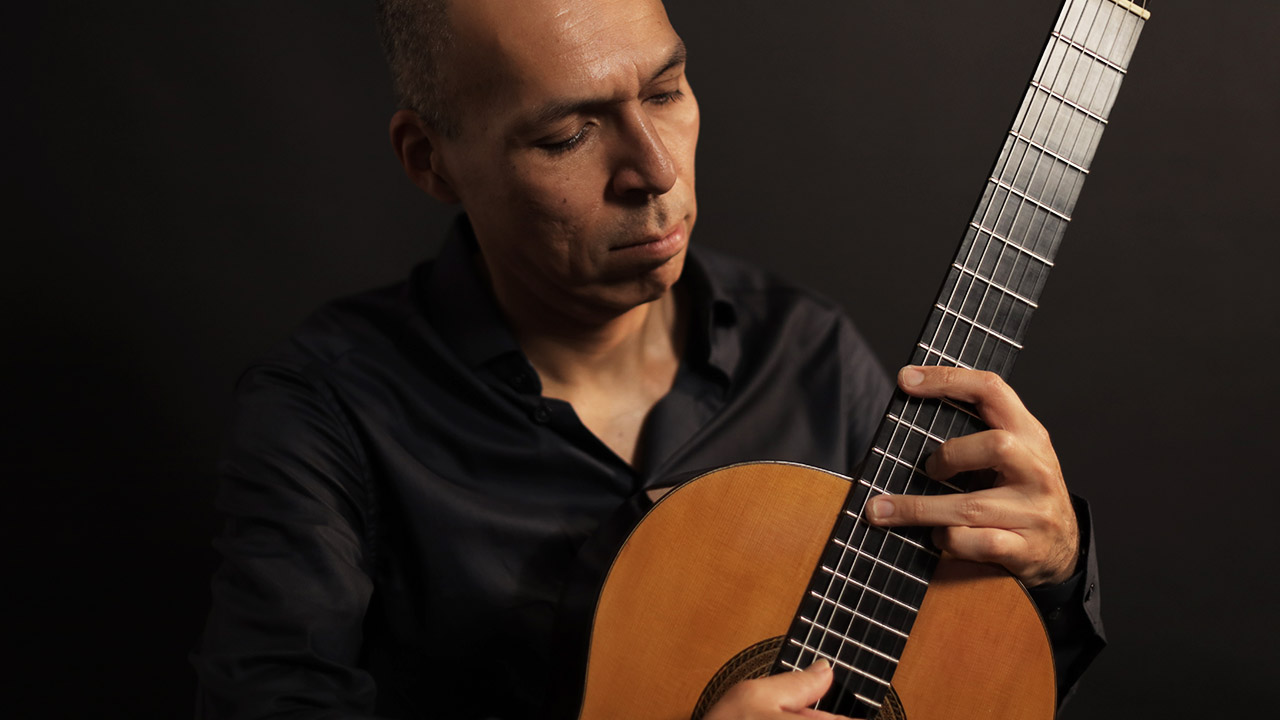by Stephanie Manning

Thomas Flippin’s music has become a common appearance on CCGS programs, and the premiere of his Poor Mourner’s Got a Home at Last was certainly welcome. The music is clearly influenced by the African American Spiritual of the same name. In between statements of the primary melody, it also required some deft high-register technique from Caballero, before ending on a bit of a mysterious note.
Written in 1973 and revised in 1985, Ulysses Kay’s Guitarra has been around much longer — yet its rare appearance in performances also helped it feel like a premiere of sorts. Executive director Erik Mann remarked before the concert that Saturday evening was likely only the second time the work had been performed by a major concert artist.
Unlike Flippin, Kay was not a guitarist, but these three movements nevertheless showcase some complex writing — full of starts and stops, speed ups and slow downs. Caballero’s amber-colored instrument glinted almost purple in the light as he slowly spun out a lovely first-movement melody, which directly quotes the Spiritual “Let Us Break Bread Together.”
Threads of Spirituals tied together not only Kay’s and Flippin’s pieces, but also the evening’s flagship work: Antonín Dvořák’s Symphony No. 9, “From the New World,” transcribed by Kazuhito Yamashita. While this connection is clear from the program notes, it would have been nice to hear Caballero speak about this theme, or the pieces in general.
The guitarist’s skill with his signature material can’t be denied. The Dvořák transcription is rare because few artists perform it, especially in a concert setting. It’s a monumental feat, and the combination of the music and Caballero’s performance rendered the massive orchestral work with surprising accuracy.
There are certainly moments where simply too much is going on. Juggling melodies, countermelodies, and accompaniment on one instrument — even one as versatile as the guitar — can’t always hit the mark, as was evidenced by parts of the first and fourth movements.
But Caballero still makes a case for the piece beyond being a theoretical exercise. His greatest skill here was his ability to conjure the various instruments of the orchestra, not just in pitch but in timbre. Upper woodwind and string moments were given a translucent quality, while brass chorales came to life via rousing strumming.
In the soothing themes of the second movement, the guitarist delicately conjured the ghosts of both the English horn and bassoon. How fitting that this Dvořák melody would go on to become a Spiritual of its own.
Published on ClevelandClassical.com November 6, 2024.
Click here for a printable copy of this article



